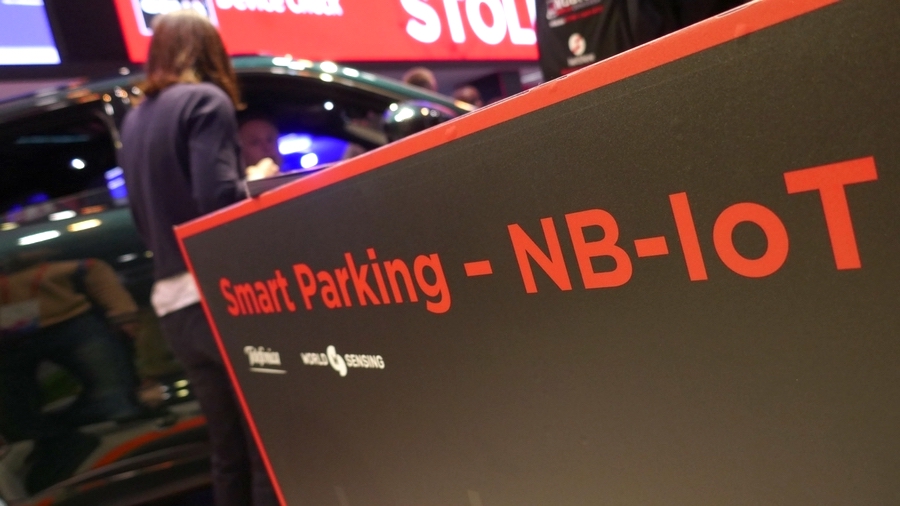LPWAN is the final piece in the mobile IoT puzzle
Vodafone's IoT business is focusing on services and partnerships rather than technology

Just a few years ago Vodafone was publicly voicing its frustration at the lack of urgency in finalising the standard for Narrowband-IoT (NB-IoT), arguing that a Low Power Wide Area Network (LPWAN) technology, mobile operators would lose out to Wi-Fi, Bluetooth and Sigfox in the battle to connect the Internet of Things (IoT).
Fast forward to 2018 and the operator has deployed NB-IoT networks in nine countries and has 2,000 masts. Vodafone is expected 16 to launch by the end of the year and wants to upgrade all of its 4G masts by 2020.
And there is broad industry support with more than 35 networks using the technology worldwide and France and Switzerland are the only European countries without a launch date.
Meanwhile the GSMA has stated that NB-IoT and LTE-M will both be essential components of 5G in connecting IoT and has urged mobile operators to offer services and products, not just connectivity, if they want to capture some of the $1.1 trillion market opportunity available by 2025.
Vodafone IoT
Not that Vodafone needed to be told. It has invested significantly in its IoT business, growing from around 100 users in 2011 to 68 million IoT connections, with revenue growing at a rate of 17 per cent a year and average data consumption rising to the tune of 44 per cent.
Traditional revenue streams are being threatened by over the top (OTT) services, intense competition and regulatory changes, and some are concerned their networks could become ‘dumb’ pipes that allow other vendors to earn revenue.
Vodafone works closely with customers, providing not just connectivity, but also advice and access to the services they need. This increases the margins available when it comes to IoT, and is why the company is working at fostering an ecosystem, including innovative startups.
Sign up to the TechRadar Pro newsletter to get all the top news, opinion, features and guidance your business needs to succeed!
“We see this as not just a connectivity story … this is really something we’re investing in and growing our business to provide additional services that change how people operate in their business world,” Adam Armer, Vodafone’s IoT business development manager told LPWA World in London.
“Not all our customers are joined by the same technology and that’s the critical value Vodafone can offer here. We have to help them pick the right technology depending on need, location and how they want to communicate in the long term.
“We have to look at how we supplement the value we bring beyond connectivity or even going down the value chain into hardware.”

The final piece
It is widely accepted that the IoT will be connected via a number of several different technologies, depending on the needs of the customer. For example, 5G will provide the capacity and low latency needed for the Industrial Internet of Things (IIoT), while 2G and 3G have been used for early projects. Fixed connectivity is essential for the bandwidth, while satellite will provide resiliency to sites.
Although mobile networks can obviously provide the coverage needed to connect remote IoT assets, many of these only need to transmit a small quantity of data and require a long battery life for them to be cost effective. This ruled out existing mobile technologies and why the industry was so desperate for NB-IoT to be standardised.
Vodafone’s customers can be found in the oil and gas, education, health and utilities industries among others, while it has been working with partners in the hardware space to help provide visibility and reach potential customers.
However, Armer argued that Vodafone was looking beyond technology and at business outcomes, helping to improve customer satisfaction and make a difference.
“But this is not just about [connecting] things,” he said. “We get excited about hardware but we’re doing this to change lives and businesses.
“Without people there is nothing. It might be good for shareholders, but there’s not much joy.”
The GSMA claims there are now 48 mobile IoT networks (both NB-IoT and LTE-M) from 24 mobile operators, and expects the 3GPP to include both standards in Release 15 of 5G later this year.
“While people often associate 5G with super-fast mobile broadband speeds, it will also serve a variety of use cases often with diametrically opposed requirements such as low data rates and long battery life as with the case of Mobile IoT,” said Alex Sinclair, Chief Technology Officer, GSMA.
“Licensed NB-IoT and LTE-M networks are already delivering trusted connectivity today to millions of devices around the world, and these networks will continue to be a fundamental component of our 5G future ushering in an era of massive IoT.”
“We were pleased to see that the GSMA said Nb-IoT has met the standards for 5G,” added Armer. “This reaffirms the belief we have that this technology will outlast the rest.”
Want to find out more about 5G? Check out our dedicated 5G hub!
- Check out the best mobile deals for June 2018
Steve McCaskill is TechRadar Pro's resident mobile industry expert, covering all aspects of the UK and global news, from operators to service providers and everything in between. He is a former editor of Silicon UK and journalist with over a decade's experience in the technology industry, writing about technology, in particular, telecoms, mobile and sports tech, sports, video games and media.